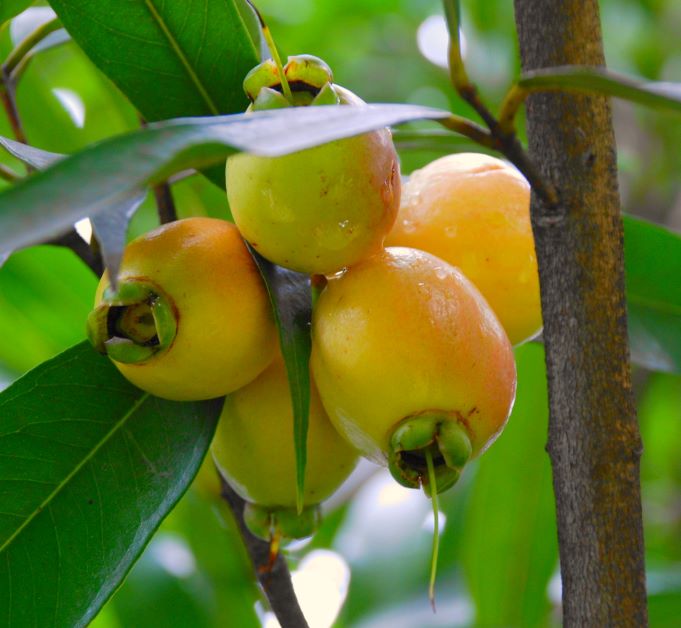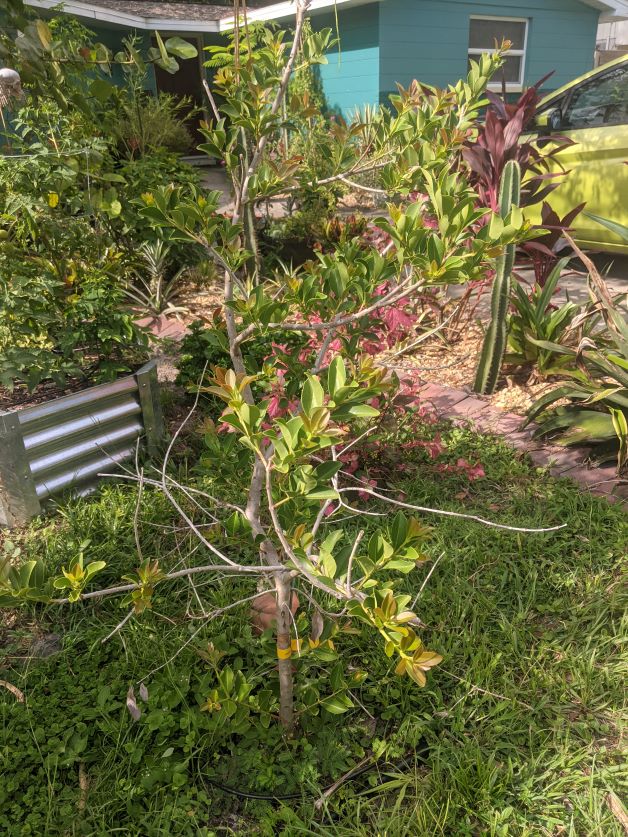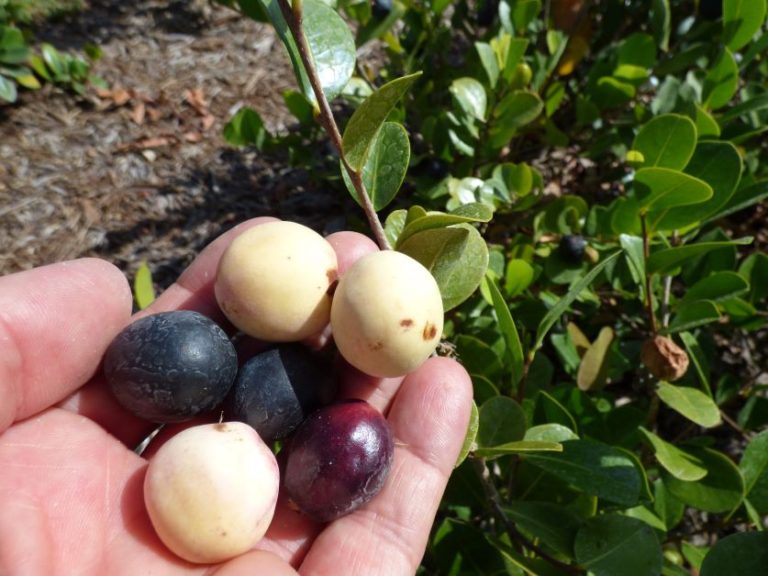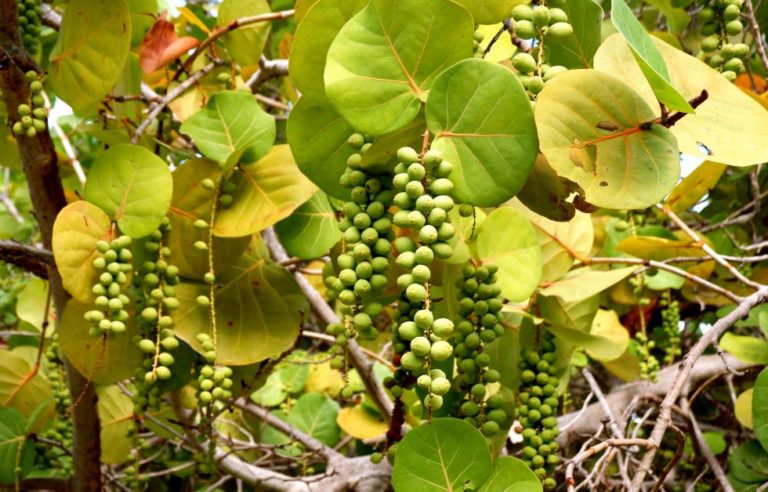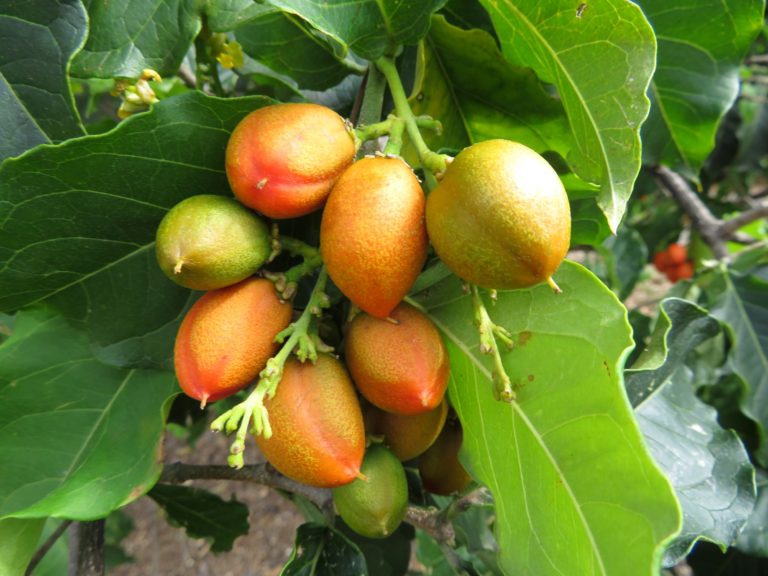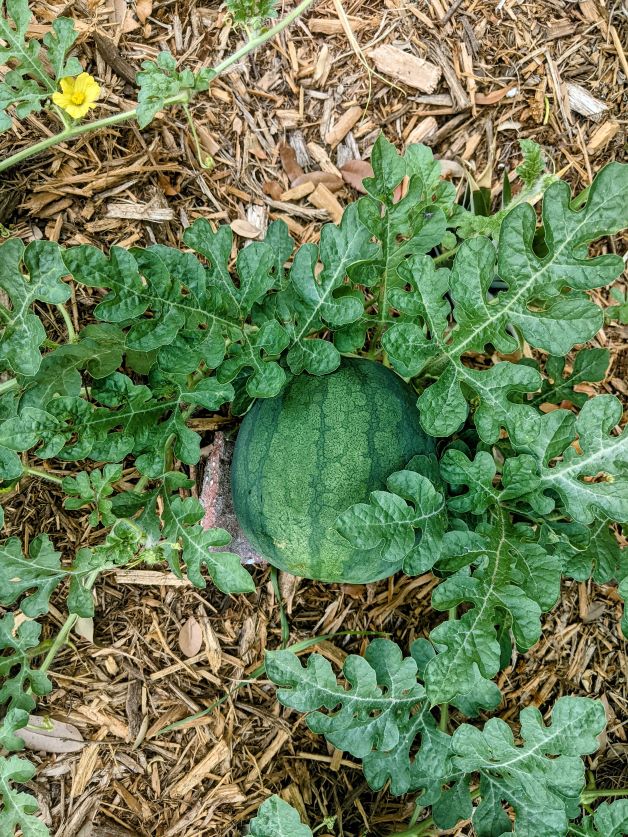How to Grow a Rose Apple Tree
I have a neighbor who grows funky fruit. Every once in a while he’ll bring something over for me to try and this week, it was a rose apple. Just one bite and I knew that I had to learn how to grow a rose apple tree of my own. This thing is delicious! As the name suggests, it really does taste just like roses. I admit that doesn’t sound very appetizing, but I’m telling you – this fruit just hits. It’s floral without being overpowering, it’s sweet but not cloying and to top it off, the tree produces show-stopping flowers.
Rose apples don’t store well and are easily damaged during shipping. That means you won’t find them in the grocery store. I’ve never seen them at the farmer’s market, either. If you want to taste a rose apple, you need your own funky fruit neighbor or you’ll have to learn how to grow a rose apple tree yourself. Good thing this fruit is super easy to grow in subtropical to tropical climates.
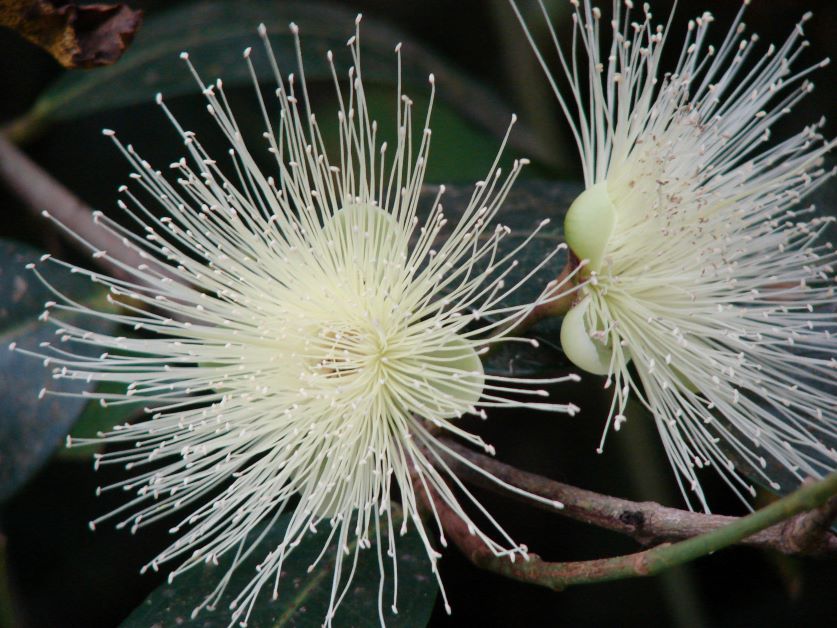
What is a Rose Apple Tree?
The term “rose apple” can refer to a few different types of fruit, but this growing guide focuses on the Syzygium jambos. Syzygium jambos is also known as the Jamaican rose apple, Malabar plum, mountain apple, water apple, cloud apple, wax apple, or Malay apple.
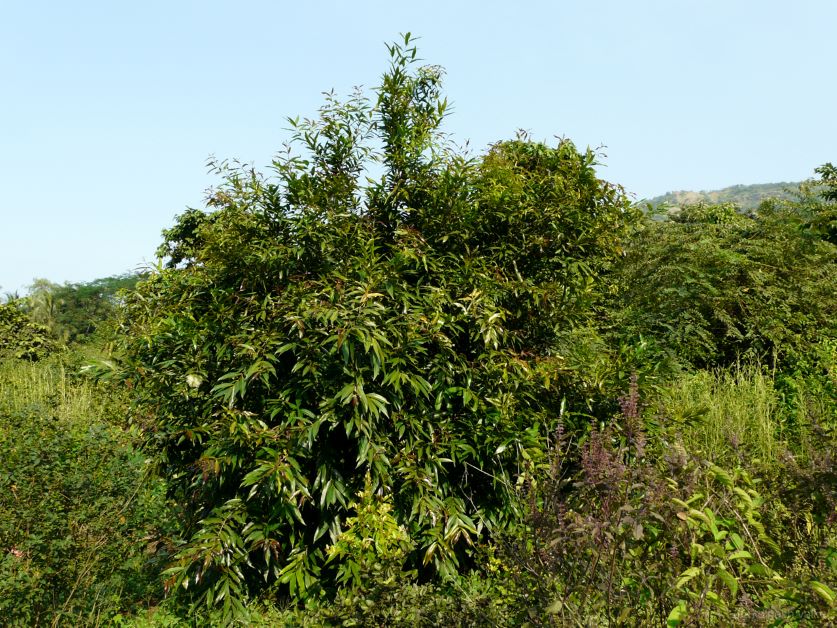
Although the most common name for Syzygium jambos is the Jamaican rose apple, they aren’t actually from the Caribbean. Syzygium jambos is a Southeast Asia native that’s been grown for thousands of years for ornamental, edible, and medicinal uses. This species of rose apple is very popular in Jamaica, however, so the name Jamaican rose apple stuck,
Rose apple is a shrubby evergreen that can grow 10 to 50 feet tall but averages at around 25 feet. Its leaves are shiny and oblong with a pointed tip. New growth comes out a red color and turns green as it matures, similar to sea grape and mango.

A rose apple tree grown from seed can take 5 to 7 years to produce fruit. One that is propagated or grafted, on the other hand, only takes 3 to 5. Rose apples are self-pollinating, which means you only need 1 tree to produce fruit. The time of year the tree produces flowers varies on your climate but generally, rose apple flowering season is October through March and rose apple harvest season is 3 to 4 months after.
Rose apple fruits are a drupe, meaning they have a pit in the middle. Peaches and plums are also drupes. An easy way to tell if your rose apple is ripe is to shake it. If the pits inside are loose and rattle around, your rose apple is ready to eat. You don’t need to peel rose apples before you eat them but don’t eat the pits, they’re inedible and possibly poisonous.
Thai Rose Apple vs. Jamaican Rose Apple
If you look up “rose apple” online, 1 of 2 fruits will pop up: Syzygium samarangense (Thai rose apple, Chomphu) or Syzygium jambos (Jamaican rose apple). Although these fruits share the same nickname (and are in the same family), they’re not the same thing.

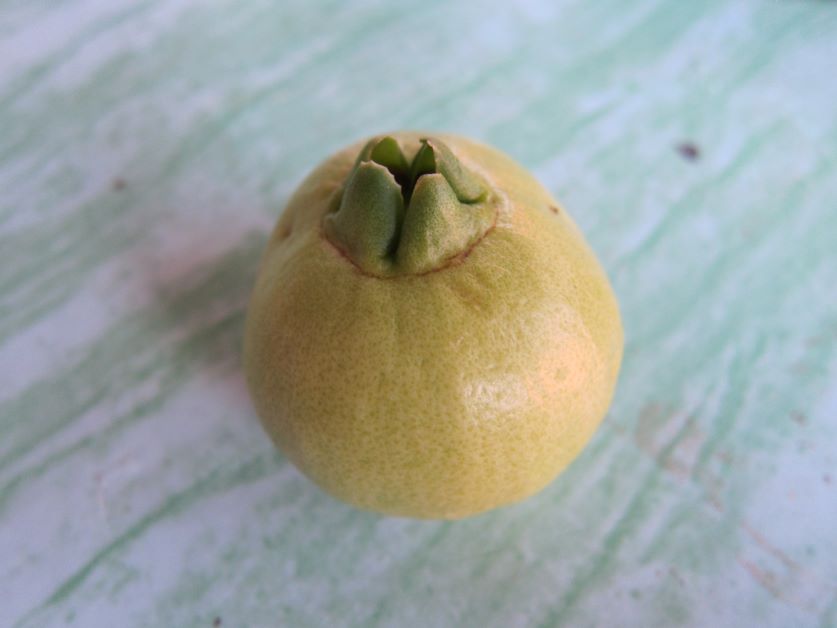
What Does a Rose Apple Taste Like?
How to Propagate a Rose Apple Tree
You can grow a rose apple tree from seed, propagation, grafting, and air layering. Seeds don’t store well and lose their viability rather quickly, so most people buy a live rose apple tree or propagate them from an already established plant.
When your tree isn’t flowering or fruiting:
- Fill 1-gallon pots with high-quality potting mix. Each container will house 1 cutting. Take multiple cuttings at a time because not all will survive.
- Cut multiple 4 to 6-inch long branches from a hearty rose apple tree. Make sure the branches aren’t too old and woody. They should be partially green and with some new growth. Cut the branches from the main plant at a 45-degree angle with a clean, sharp knife.
- If you’d like, dip your cutting into organic rooting hormone cut-end down. This is optional but can make it more likely that your cutting will survive.
- Plant your cuttings 1 per pot and water them in. As they grow, keep the soil moist but not soggy. Your cuttings should be kept at 75F+ and in dappled shade.
- It can take 6 months or more for your cutting to root. When your branch starts to produce new growth, then you know your cutting was successful.
Rose Apple Tree Care

In the right climate, rose apple trees grow wild and need very little care.
Temperature
Rose apple trees are hardy in USDA zones 9 through 12. This is a tropical plant that needs a lot of heat and humidity. Gardeners in zone 9 will have to protect their rose apple tree a few times a year by covering it with a frost blanket when nighttime temperatures dip into the 30s. This is especially important with young trees. While not ideal, established rose apples can take occasional temperatures in the 20s but a hard, prolonged frost will kill them.
Light
Rose apples are a full sun plant but for best results, grow them in a spot where they’ll get some dappled shade in the afternoon when the sun is the strongest.
Water
Like most tropical plants, rose apple trees aren’t drought-tolerant and like a moderate amount of water. If needed, put a ring of oak leaf compost around your tree to help your soil retain moisture. If you mulch, be sure to leave a couple of inches between the trunk of your tree and your mulch so that your tree trunk doesn’t get soggy.
Soil
Rose apples aren’t picky about their soil but do prefer a pH of 5.5 to 7.0. Fertile and loamy is best but they’ll do fine in sand or clay, too. Keeping your rose apple tree warm and moist is more important than what you grow it in.
Fertilizer
Fertilize your rose apples 3 times a year with an organic all-purpose fertilizer.
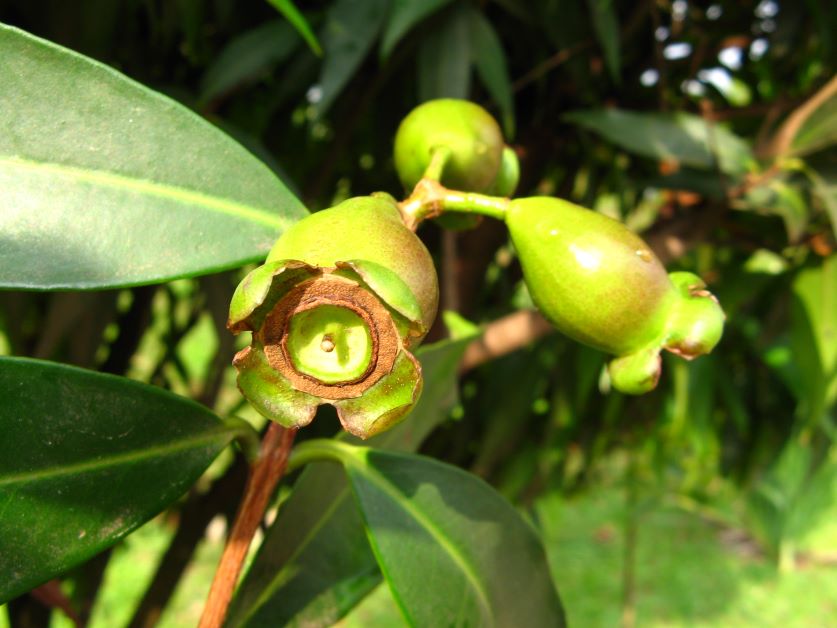
Salt and Wind
Rose apple is moderately salt and wind tolerant, but they won’t do well if they are in constant sea spray.
Pruning
Pruning isn’t required when growing rose apple but it can make it easier to harvest your fruit by keeping it within arm’s reach. After the harvest season, use pruning shears to remove excess branches and trim down their height.
Can You Grow a Rose Apple Tree in a Container?
Yes! You can grow rose apple trees in containers. In fact, gardeners who live above zones 9 through 12 have no choice other than to grow their rose apple in a pot. Growing a rose apple tree in a container means you can bring it indoors during winter.
When growing rose apple in a container, plant it in a pot that’s at least 5-gallons and make sure all of the drainage holes are drilled out. Our DIY garden container is also a good choice.
Is Rose Apple Invasive?
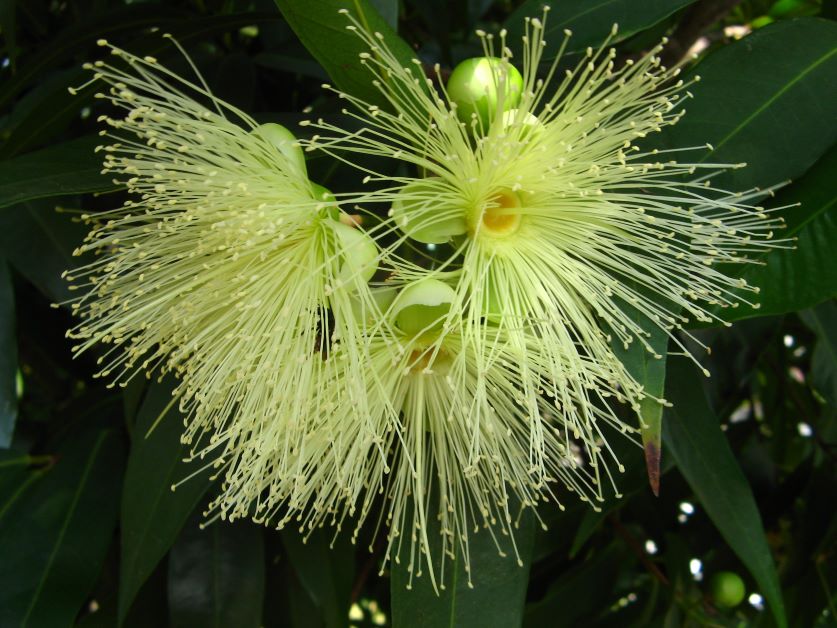
In Florida, rose apples are listed as Category II invasive. That means that this species is starting to spread and may cause future harm to the environmental harm if they’re left unchecked. Rose apples aren’t quite “invasive” invasive, but they’re getting there. Rose apple trees are also problematic in Hawaii and other tropical regions.
One rose apple tree can be the source for more rose apple trees miles away. Birds eat rose apples and excrete the seeds mid-flight. These seeds then germinate and give rise to more trees in places where they weren’t intended to grow.
Some ways to reduce the invasiveness of your rose apple is to cut it back every few years to keep it small and to protect the fruit from birds by covering your tree with netting during the fruiting season.
Rose Apple Tree Troubleshooting
Pests
Birds and Mammals
Birds, raccoons, and possums love to eat ripe rose apples. To increase your yield (and help curb invasiveness), cover your tree in bird netting. You can also mount a solar-powered owl on a pole and keep it near your tree. The owl will act as a scarecrow and should keep unwanted guests away.
Fruit Flies
Fruit flies can be a nuisance when growing any fruit. The best way to deal with fruit flies is to harvest fruit as it ripens and to pick up dropped fruit before it starts to rot.
Diseases
Root-Rot and Fungal Disease
Rose apples do need moist soil, but keeping your tree too wet for too long will cause it to get root-rot and fungal diseases like powdery mildew. Let your rose apple tree dry out every once in a while and always water your tree at the base and not on the leaves. Installing drip irrigation or using a water wand can help.
A couple of applications of organic copper fungicide in spring can also help prevent fungal disease but once your tree has contracted a disease, copper fungicide will have little effect.
Featured Photo Credit: Mauro Halpern

